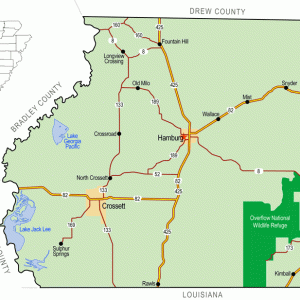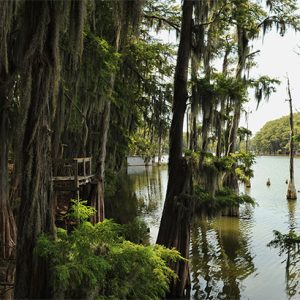calsfoundation@cals.org
Wilmot (Ashley County)
| Latitude and Longitude: | 33°03’26″N 091°34’24″W |
| Elevation: | 115 feet |
| Area: | 1.77 square miles (2020 Census) |
| Population: | 416 (2020 Census) |
| Incorporation Date: | May 3, 1898 |
Historical Population as per the U.S. Census:
|
1810 |
1820 |
1830 |
1840 |
1850 |
1860 |
1870 |
1880 |
1890 |
1900 |
|
– |
– |
– |
– |
– |
– |
– |
– |
– |
– |
|
1910 |
1920 |
1930 |
1940 |
1950 |
1960 |
1970 |
1980 |
1990 |
2000 |
|
622 |
627 |
777 |
625 |
721 |
732 |
1,132 |
1,127 |
1,047 |
786 |
|
2010 |
2020 |
|
|
|
|
|
|
|
|
|
550 |
416 |
|
|
|
|
|
|
|
|
Although it was not incorporated until 1898, Wilmot is one of the older settlements in eastern Ashley County. Situated just east of Lake Enterprise, which was once part of Bayou Bartholomew, Wilmot was a steamboat stop long before the railroad came through, built a depot, and renamed the community. Twenty-first-century Wilmot is located on Highway 165 between Parkdale (Ashley County) and the Louisiana state line.
Evidence of prehistoric habitation of the area includes a mound north of Lake Enterprise that was excavated by the Arkansas Archeological Survey in 1997. The mound is thought to have been built around 1500 BC, possibly making it the oldest mound in Arkansas. Much of the dirt and many of the stone tool fragments found by the survey team had been imported from other locations rather than produced locally. No pottery remains were found, again suggesting the antiquity of the site.
In 1861, John Brooks acquired a land patent to a stretch of land along Lake Enterprise (then part of Bartholomew Bayou); the Wilmot Cemetery is now located on the land that Brooks purchased. Another significant early land owner was David Milton Grant. The Owensteen family operated the steamboat stop, and two or three stores were established at the location following the Civil War. John T. Allen was the most successful merchant in the area by the time the railroad arrived in 1890. A small Methodist congregation that called itself Mount Gilead existed for a time but had closed by 1892. The community called itself Enterprise, but the post office (created in 1880) was called Bartholomew. The name Carneville was also proposed by some residents, but the city was eventually named Wilmot for the railroad surveyor. An African Methodist Episcopal (AME) congregation was meeting by 1886.
Investor J. W. Harris anticipated the coming of the railroad and bought large portions of land, reselling the parcels after the surveyor had planned the city surrounding the depot that bore his name. Edward O. McDermott, a physician and son of inventor Charles McDermott, was hired by the railroad as a tie contractor; he made his home in Wilmot and opened a store in the growing city. David Rankin Perkins, an African American teacher from Louisiana, also opened a successful store in Wilmot. Jeff Brame and his brothers opened a store and a bank around 1899; the bank failed around 1909. A second bank had opened in Wilmot in 1906. That bank survived until the Depression, when it was one of forty banks in Arkansas associated with investor A. B. Banks that failed on the same day. It was replaced four years later by Wilmot State Bank.
A public school for Black children was built in 1909. A theater was built in 1911, and a two-story brick school building was also completed in 1911. A newspaper called the Wilmot Weekly was established in 1912, and the old Methodist congregation reorganized that same year, building a new brick structure and hiring a full-time pastor. Two Baptist congregations were also established. Edward McDermott built a hotel on the banks of Lake Enterprise. A barbershop and pool hall opened in 1922, an icehouse was constructed in 1925, and a golf course was also built in the 1920s.
The businesses of Wilmot were largely agricultural. Several plantations shipped out cotton, corn, and other produce. Cypress wood was harvested from the lake and made into shingles. The city also had a stave mill and a furniture store. An oil mill (producing oil from cotton seeds) was built in 1902. In 1927, an African-American man named Winston Pounds was lynched by “persons unknown.” Following the Depression and World War II, the population of the area dropped as agriculture became more mechanized and as industry attracted workers to cities in Arkansas and in northern states. Historians estimate that half the Black residents of eastern Ashley County emigrated around the middle of the twentieth century. Remaining farmers, with financial support from the federal government, diversified their crops, adding rice, soybeans, and cattle. The Black school, which had burned down in 1941 and was replaced in 1948, closed in 1970 after school desegregation.
In the twenty-first century, Wilmot survived with some agricultural income and hopes of tourist opportunities associated with Lake Enterprise. The school district was consolidated into the Hamburg (Ashley County) district; an elementary school continued to serve about ninety students in Wilmot. Cajun Gold Catfish Processors is the largest employer in the city, which also has two restaurants, a grocery store, a convenience store, and a used-car lot. Wilmot has three Baptist congregations, a nondenominational church called Sweet Home Church, and Miller Chapel (the current Methodist congregation). The population of Wilmot in the 2010 census was 550, with 115 white citizens and 422 Black citizens; the total population had fallen to 416 by the 2020 census.
Mamie Aselean Parker, born in Wilmot, was a conservationist who worked nearly three decades with the U.S. Fish and Wildlife Service (USFWS).
For additional information:
DeArmond-Huskey, Rebecca. Bartholomew’s Song: A Bayou History. Bowie, MD: Heritage Books, 2001.
Etheridge, Y. W. History of Ashley County, Arkansas. Van Buren, AR: The Press-Argus, 1959.
Steven Teske
Butler Center for Arkansas Studies
 Ashley County Map
Ashley County Map  Lake Enterprise
Lake Enterprise 




My great-great-grandfather, David Milton Grant, came to Wilmot in 1848 from Abbeville, South Carolina, through Georgia. He was one of the largest land owners on the Bayou. At that time Wilmot was called DeBartholomew. It was also known as Grant’s Place.” His grave is at the Old Montgomery Place out of Wilmot on the Bayou. He brought with him his wife, two daughters, and two sons. One of the daughters, Mary Frances, married Thomas Stanley. One of the sons married Dr. Dean’s daughter and the other died in the Civil War.